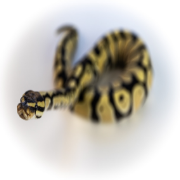Introduction to fuzzy_types¶
fuzzy_types provides a set of core classes representing fuzzy Python datatypes and helper
functions, using rapidfuzz, a package for fuzzy
string matching package based on fuzzywuzzy.
fuzzy_types currently provides fuzzy versions of the following datatypes:
Python lists (
fuzzy_types.fuzzy.FuzzyList)Python dicts (
fuzzy_types.fuzzy.FuzzyDict)Python OrderedDicts (
fuzzy_types.fuzzy.FuzzyOrderedDict)Python str (
fuzzy_types.fuzzy.FuzzyStr)
Fuzzy Basics¶
All fuzzy datatypes are subclassed from the same FuzzyBase class and have similar functionality. Fuzzy datatypes use fuzzywuzzy
to provide fuzzy string matching on any string parameter, such as string list items, or dictionary keys. The following
example demonstrates fuzziness using FuzzyList but applies equally to other fuzzy classes. Let’s create a FuzzyList
>>> from fuzzy_types.fuzzy import FuzzyList
>>> ll = FuzzyList(['apple', 'banana', 'orange', 'pear'])
>>> ll
['apple', 'banana', 'orange', 'pear']
Fuzzy items are accessible by name and fuzzy-matching attempts to handle fuzzy typos.
>>> # access by name
>>> ll['pear']
pear
>>> # access by mispelled name
>>> ll['paer']
pear
>>> ll['appl']
apple
If a fuzzy item cannot be matched, a ValueError is thrown.
>>> ll['mandarin']
ValueError: Cannot find a good match for 'mandarin'. Your input value is too ambiguous.
A fuzzy attempt must be at least 3 characters along or it throws an error.
>>> ll['ba']
AssertionError: Your fuzzy search value must be at least 3 characters long.
By default, fuzzy items are also accessible as dottable attributes. This is enabled by default but can be
disabled by passing dottable=False when initializing a fuzzy object.
>>> ll.apple
apple
>>> ll = FuzzyList(['apple', 'banana', 'orange', 'pear'], dottable=False)
>>> ll.apple
AttributeError: 'list' object has no attribute 'apple'
FuzzyDict and FuzzyOrderedDict behave almost the same way as FuzzyList. For dictionaries, the fuzzy matching occurs
only for dictionary keys, and not dictionary values.
>>> from fuzzy_types.fuzzy import FuzzyDict
>>> d = FuzzyDict({'apple':1,'banana':2,'orange':3,'pear':4})
>>> d.apple
apple
>>> d['oang']
>>> 3
FuzzyStr objects behave exactly like regular strings, except their equality operator has been overridden to be fuzzy.
>>> from fuzzy_types.fuzzy import FuzzyStr
>>> s = FuzzyStr('apple')
>>> 'appl' == s
True
>>> 'chocolate' == s
False
Fuzzy Specifics¶
fuzzywuzzy attempts fuzzy string-matching by computing string similarity scores and selecting out the best
matched score above the cutoff threshold, which is set to a default of 75. All Fuzzy classes use a provided convienence
function, fuzzy_types.utils.get_best_fuzzy(), for all fuzzy matches. This function can be replaced with any custom
function via the use_fuzzy keyword argument when initializing an object.
By default, get_best_fuzzy uses a default score threshold of 75/100 and a minimum character limit of 3 when fuzzy matching.
You can modify the default values get_best_fuzzy uses by setting the following configuration variables inside a custom
YAML config file, located at ~/.fuzzy/fuzzy_types.yml.
minimum_fuzzy_characters: 3
fuzzy_score_cutoff: 75
Copying a Fuzzy object produces a new Fuzzy object.
>>> # copy a FuzzyList
>>> tt = ll.copy()
>>> type(tt)
fuzzy_types.fuzzy.FuzzyList
You can convert a Fuzzy object back to its original type with to_original method.
>>> # convert a FuzzyList back to a regular python list
>>> old = tt.to_original()
>>> old
['apple', 'banana', 'orange', 'pear']
>>> type(old)
list
Fuzzy Customizations¶
All fuzzy_types use get_best_fuzzy to perform fuzzy matching, which
itself wraps the rapidfuzz.process.extract function. The default fuzzy-matching function can be
overridden in any fuzzy_types object, by passing a new callable function into the use_fuzzy
keyword argument.
The rapidfuzz.process.extract function used by the default get_best_fuzzy
accepts as input a list of “choices”, any iterable list of string used for comparison during fuzzy
matching. To see the list of choices used by any fuzzy_types, access the choices property,
e.g. fuzzy_types.fuzzy.FuzzyList.choices or fuzzy_types.fuzzy.FuzzyBaseDict.choices.
>>> from fuzzy_types import FuzzyList
>>> ll = FuzzyList(['apple', 'banana', 'orange', 'pear'])
>>>
>>> # look at the list of choices passed to rapidfuzz
>>> ll.choices
['apple', 'banana', 'orange', 'pear']
The mapping between the items in a FuzzyList or FuzzyDict, and the list of choices passed
to rapidfuzz, is controlled by the base fuzzy_types.fuzzy.FuzzyBase.mapper method. By default,
the mapper returns an explicit string of a list’s items or dict’s keys, i.e. str(item). This
means that by default, FuzzyList operates as a list of strings.
The mapper method can be overridden to customize how the items in your input list or dict
get converted into a list of fuzzy options, e.g. creating a fuzzy list of objects where you want to
perform fuzzy matching using an attribute of the instance. Suppose we have a class representing a
type of toy
class Toy(object):
""" class representing toy objects """
def __init__(self, name='toy'):
self.name = name
def __repr__(self):
return f'<Toy(name="{self.name}")>'
And we have a list of toys that we want to convert to a fuzzy list.
>>> # create a list of toy objects
>>> toys = [Toy(n) for n in ['car', 'truck', 'top', 'ball', 'rag', 'doll']]
>>> toys
[<Toy(name="car")>, <Toy(name="truck")>, <Toy(name="top")>, <Toy(name="ball")>, <Toy(name="rag")>, <Toy(name="doll")>]
>>> create a fuzzy list of toys
>>> tt = FuzzyList(toys)
By default fuzzy_types will map each instance’s string repr to the list of choices. This may
not be ideal, or even desired, for complex reprs and could confuse the fuzzy matching.
>>> # view the default choices passed to rapidfuzz
>>> tt.choices
['<Toy(name="car")>', '<Toy(name="truck")>', '<Toy(name="top")>', '<Toy(name="ball")>', '<Toy(name="rag")>', '<Toy(name="doll")>']
To instead customize the FuzzyList of Toys to use the name attribute for all fuzzy matching,
we can create a new custom FuzzyList class overriding the default mapper method.
class FuzzyToy(FuzzyList):
""" custom fuzzy list for toys """
@staticmethod
def mapper(item):
""" overridden mapper to return the toy's name """
return str(item.name)
Now we create a new list of FuzzyToy where the choices are mapped to the correct attribute
>>> # create a new fuzzy list of toys
>>> tt = FuzzyToy(toys)
>>> tt
[<Toy(name="car")>, <Toy(name="truck")>, <Toy(name="top")>, <Toy(name="ball")>, <Toy(name="rag")>, <Toy(name="doll")>]
>>> # view the fuzzy choices passed to rapidfuzz
>>> tt.choices
['car', 'truck', 'top', 'ball', 'rag', 'doll']
Overriding the mapper also controls what is shown as a dottable attribute.
>>> # each Toy.name is added as a dottable attribute
>>> tt.doll
<Toy(name="doll")>
